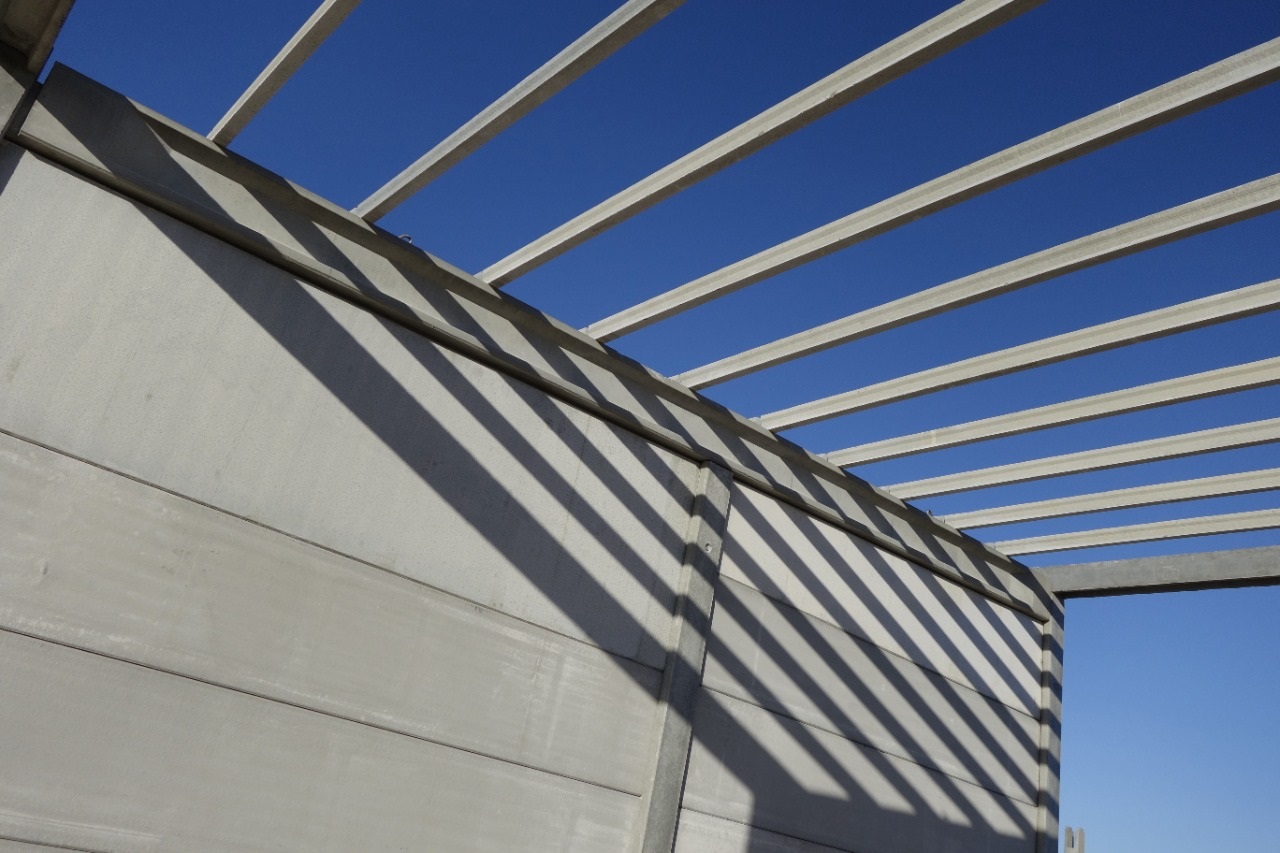
Precast is used within the exterior and interior walls. Using a Precast concrete system offers many potential advantages over onsite casting. Mapei has come up with Precast Concrete.
Precast concrete is a construction product produced by casting concrete in a reusable mould or “form” which is then cured in a controlled environment. To ensure good durability, high strength, low water-cement ratio, and improved rheology, use of concrete admixtures is compulsory.
Mapei offers Dynamon SX626 and Dynamon SX550, hyper-plasticising admixtures based on a new generation of polycarboxylate ether. Dynamon SX626/SX550 is a used waterproof and durable concrete with exposure class in compliance with EN206-1, ready mixed concrete with high mechanical performance and good acceleration in the development of mechanical strength, making the concrete pumpable.
The precast building is constructed by assembling and connecting various prefabricated elements required in the building structure. These elements are:
Precast Slabs
Precast Beams
Precast Columns
Precast Walls
Precast Foundations
Let us see the range of products Mapei offers for assembling and concreting these prefabricated elements to make a building:
Anchoring with Expansive Mortars and fixing with Rapid Setting Binders
Excessive spanning of areas by precast concrete foundation sections with no fill and no footing at all may lead to future water entry, floor slab settlement, or in severe cases, foundation movement. Spans over five feet would violate a Superior Walls guideline and other spans may be improper depending on the product and the engineering design for the project.
Mapefill GP- General purpose non-shrink grout. Mapefill GP is used for grouting voids in structural elements such as - patching up honeycombs in concrete, filling gaps in precast elements, and grouting base plates and bridge bearings.
Repair Precast Concrete with Mortars and Controlled Shrinkage Binders
Concrete is typically “restrained”, so changes in volume result in cracks because concrete is weak in tensile. Volume changes occur due to chemical and autogenous shrinkage - both result in hydration.
Mapefer 1K - One-component corrosion-inhibiting cement mortar for the protection of reinforcing rods. Mapefer 1K also acts as adhesion improver for concrete repair mortars.
Planitop - R2-class, rapid-setting shrinkage-compensated, thixotropic, fibre-reinforced, cementitious mortar applied in a single layer from 3 to 40 mm thick, for repairing and smoothing concrete. Plainitop is used for:
Quick repairs to deteriorated parts in concrete, the corners of beams, pillars, buffer walls, cornices and the front edges of balconies.
Quickly smoothing over surface defects in cast concrete, such as honeycombs, spacer holes, construction joints, etc., before painting the surface.
Repairing and smoothing over concrete mouldings on civil buildings, such as skirt roofs and protruding decorative elements.
Repairing pre-cast concrete structures
Repairing Cracked Precast Concrete by Injection Casting
Precast panels are reinforced for crack control and are typically made of high-quality concrete with low water-to-cement ratios and very low water absorption. It is for these reasons that they can act as a reliable barrier to water penetration. Millions of square feet of precast panels installed over the last five decades have provided real-life proof of this. However, the polymer sealants between panels and other components are susceptible to workmanship flaws during construction and slow deterioration over time
Epojet LV- Epojet LV is a two-component epoxy adhesive. The pre-measured components (component A = hardener) must be mixed together before being used. Once mixed, Epojet LV becomes a very fluid liquid that can easily penetrate even in microcracks. Epojet LV polymerizes without any significant amount of shrinkage, also on wet surfaces and once hardened, It is waterproof and resists chemical agents present in the atmosphere.
Eporip - Monolithic construction joints between fresh and hardened concrete. Bonding precast concrete elements and bonding steel to concrete. Filling cracks in concrete. Eporip is a solvent-free epoxy adhesive consisting of two pre-measured components (components A = resin, component B = hardener) that have to be mixed before use. Eporip has the consistency of a slightly thixotropic paste that can be applied by brush on both horizontal and vertical surfaces.
Adesilex PG - Two-component thixotropic epoxy adhesives for structural bonding used for Structural repair, bonding, and reinforcement of concrete elements, natural stone, mortar and brick.
Waterproofing
Special basement waterproofing system details are needed if a basement de-watering system is installed after the construction of a building with precast concrete foundations or walls.
Mapegum WPS- Quick-drying flexible liquid membrane for waterproofing internal surfaces. Waterproofing indoor floor and wall surfaces that are not subject to rising damp nor in permanent water immersion. Flexible, anti-fracture membrane. Apply before the installation of ceramic tiles or stone material. Mapegum WPS may be used to:
Plasterboard, gypsum or cementitious render, lightweight cement block and marine-plywood;
Cementitious, anhydrite, wooden, and magnesite substances and existing ceramic and natural stone after the application of Eco Prim T primer.
Mapelastic- Two-component cementitious mortar, flexible down to 20-degree Celcius, for waterproofing balconies, terraces, bathrooms, and swimming pools. Mapelastic is used for waterproofing and protection of concrete structures, renders, and cementitious screeds.
Mapelastic Smart- Two-component, high-flexibility cementitious mortar (with crack-bridging capacity > 2 mm) applied by trowel or roller for waterproofing balconies, terraces, bathrooms, and swimming pools. Mapelastic Smart is used to protect concrete structures, renders with cracked hairline and cementitious surfaces in general which, being subject to vibrations, may suffer from cracking.
Comments
Load more comments